White flowers are great for brightening up a garden, especially at night when they seem to glow in the moonlight.
12 Best White Flowers for Your Garden
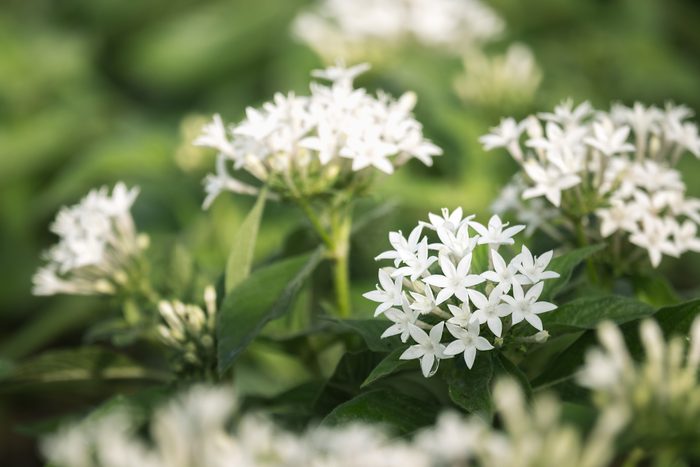
Egyptian Star Flower
If you’re looking for a white flower that doesn’t mind the heat and attracts pollinators, consider Egyptian Star Flower, sometimes called pentas. Falling Star White is a nice one.
Most of us grow these as annuals, but they’ll survive year-round in United States Department of Agriculture Plant Hardiness Zones 10 and 11. They grow up to 24 inches tall with clusters of small star-shaped flowers. Start plants indoors from seeds about seven to nine weeks before your expected frost-free date, or buy them from a local garden center.
Once established, give them about an inch of water per week and they’ll bloom until frost stops them in the fall.
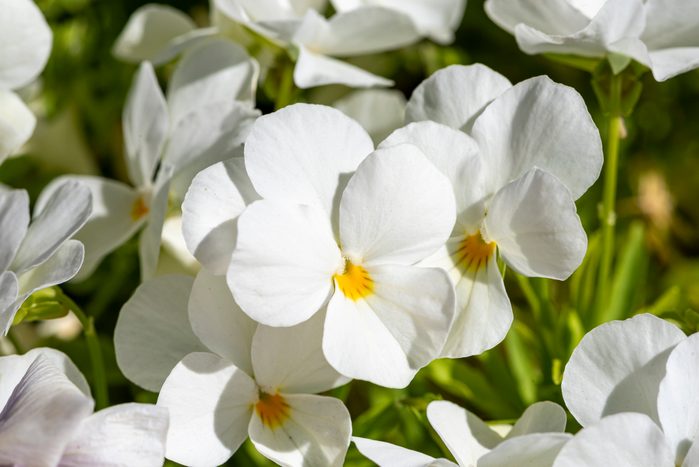
Pansies and Violas
Pansies and violas are favorites for early spring and fall. Both prefer cooler weather.
Where winters are mild, especially USDA Zone 7 and warmer, pansies and violas often grow from fall through spring before finally succumbing to summer heat. In Zone 6 and colder, we usually treat them as cool-season annuals. Plant them early in the spring before the last frost, or later in the fall to finish out the season.
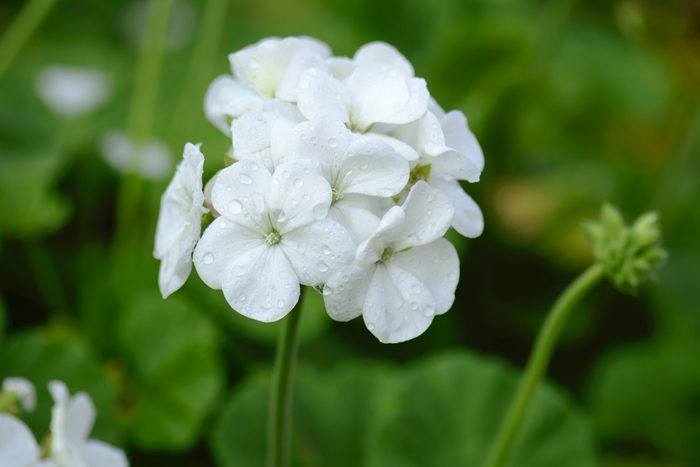
Geranium
When people picture geraniums, they usually see red, but there are white geraniums, too.
Most of us grow geraniums as annuals. In Zones 10 and warmer, geraniums can grow outside year-round. For the rest of us, geraniums die off in the fall after a freeze. If there’s a variety you want to keep, you can overwinter them indoors.
Geraniums prefer full sun and can be grown in containers or in the ground. Water them regularly and cut off spent blooms, and they’ll bloom all season long.
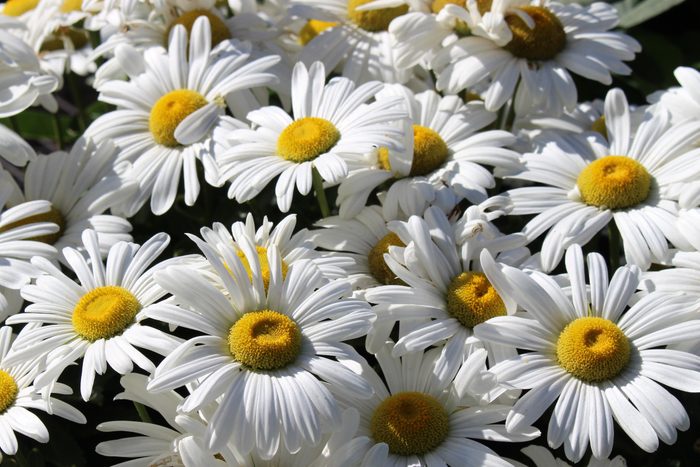
Shasta Daisies
A list of white flowers wouldn’t be complete without mentioning the perennial Shasta Daisy. These hybrids date to the 1890s. Today there are many varieties available — some shorter, some taller and some with double flowers.
One of the most common varieties, ‘Becky‘, grows well in Zones 5 through 9 in full sun and well-drained the soil. Depending on where you live, daisies begin blooming in mid-summer. Cut off faded blooms to force a few extras until fall(also explore favorite sunflower varieties for fall). They make great cut flowers.
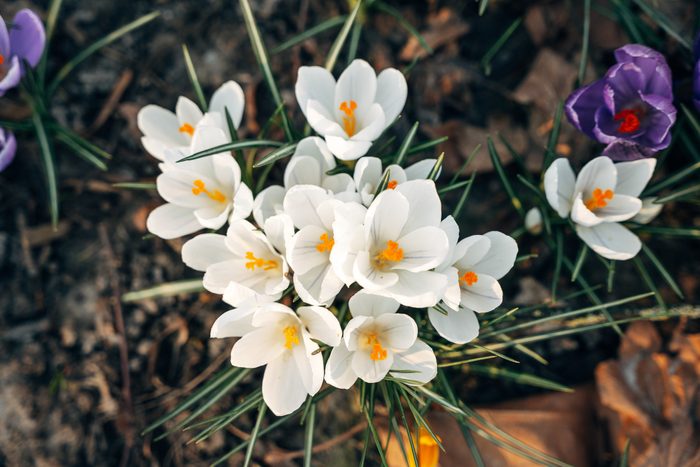
Crocuses
Just as winter begins losing steam, flowering bulbs make an appearance. These include crocuses, which come in assorted colors, including white.
Crocuses grow well in Zones 4 through 8 in full sun to part shade and well-drained soil. Just five inches tall, they’ll begin blooming in March or later, depending on your location. It’s amazing to see how quickly bees find them, even on the coldest days of spring.
When the flowers fade, it isn’t necessary to deadhead them. Just leave the foliage to grow until it dies back naturally. This ensures the plant stays strong and returns the following spring.
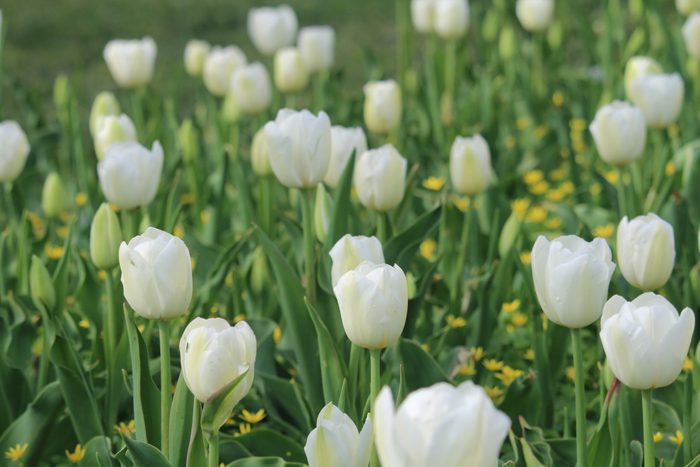
Tulips
Tulips come in many colors, including white.
In Zones 3 through 8, buy tulip bulbs to plant in the fall. They require a cold period before coming up and blooming in the spring, giving your garden an early array of white flowers.
For best results, choose a sunny, well-drained location and cut off the spent blooms, leaving the foliage to die off naturally. While the foliage grows, it sends energy down to the roots to grow a bigger bulb for next year.
When cutting tulips to enjoy indoors, choose flowers that have barely begun to open. They’ll last longer in a vase.
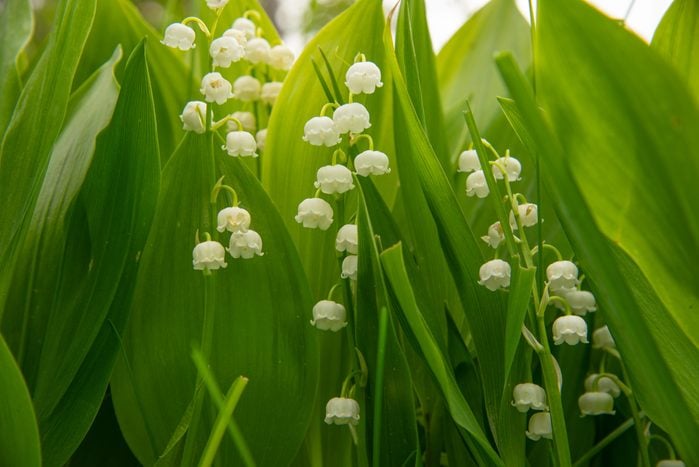
Lily of the Valley
Lily of the Valley is a white flowering perennial hardy in Zones 3 through 8. Some gardeners love it and some loath it. Why? As a ground cover, it does well in part-shade and tolerates various conditions once established. But if planted in a perennial garden, it can take over and crowd out other flowers.
Use it as a ground cover. It will soon spread by underground rhizomes to fill in an area, with blooms appearing in late spring. Many gardeners buy and plant bare roots of Lily of the Valley in early spring, or get starts from other gardeners. Lily of the Valley is easy to dig up and share with others.
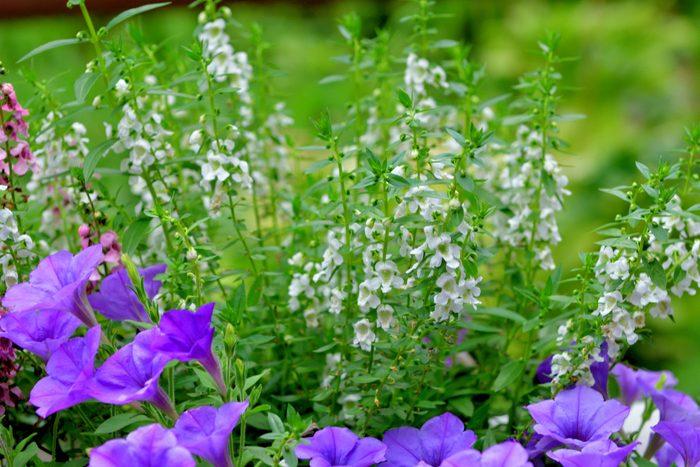
Angelonia
A great flower to add height to a container planting, Angelonia grows a little more than a foot tall. These flowers, annuals everywhere except Zones 10 and 11, come in many colors, including white. They are sometimes called summer snapdragons because they grow well in the heat; most snapdragons do better in cooler temperatures.
Start Angelonia from seeds sown indoors four to six weeks before your expected last frost, or in your garden. Many garden centers also sell the plants in the spring.
Angelonia likes full sun and moist, well-drained soil. As with many annuals, cut back spent blooms to encourage new ones throughout the summer
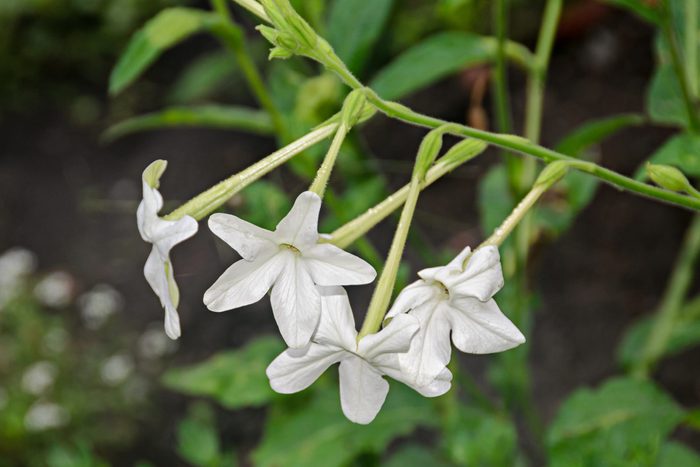
Nicotiana
Nicotiana is commonly called flowering tobacco, although it’s not used in tobacco production. Its white flowers are heavily scented, especially at night.
This is an easy-to-grow annual. Its seeds need warmth to germinate, so start indoors four to six weeks before your predicted last frost. Plant seedings in the garden once there is no danger of a late frost. Because it’s related to tomatoes, peppers and eggplant, don’t grow it near those plants because it’s susceptible to many of the same viruses.
Many varieties of nicotiana can grow up to three feet tall. If you’re looking for a smaller plant, check out the Starmaker Series, which grow only a foot tall.
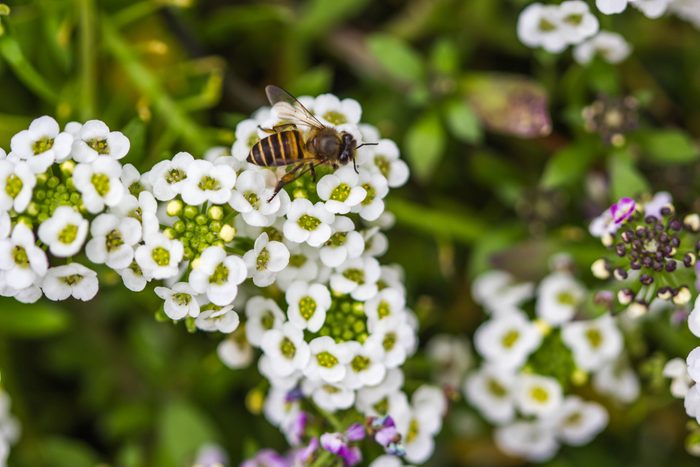
Sweet Alyssum
One of the first white annual flowers you can plant in the garden or in containers in the spring is sweet alyssum. It’s a great container plant because its small, mounded form can spill over the edge. Or use it in a border to soften the edge. As a bonus, its sweet scent attracts pollinators.
Most people buy sweet alyssum plants from a garden center, but you can start seeds indoors six to eight weeks before your expected last frost. You can also sow the tiny seeds right in the garden. This flower likes cooler weather. Flowering slows during the hottest days of summer, but it takes off again in the fall.
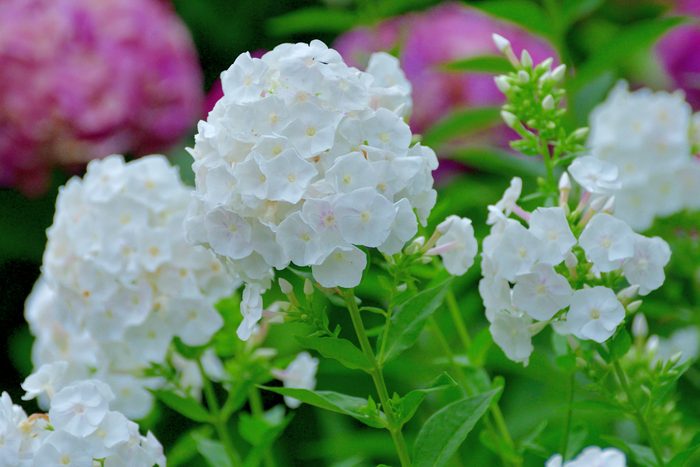
Tall Phlox
Tall phlox is a perennial that grows well in Zones 4 through 8. Many varieties, including ‘David,‘ show white flowers beginning in July. These perennials do well in full sun and part shade and will grow three to four feet tall. In a perennial border, they stand out, especially at night when white flowers are more visible.
Tall phlox can be susceptible to powdery mildew, but this rarely kills the plant. To avoid this, choose varieties known to be mildew-resistant, space the plants so they get good air circulation, and remove and dispose of diseased foliage in the fall. Never compost any diseased foliage.
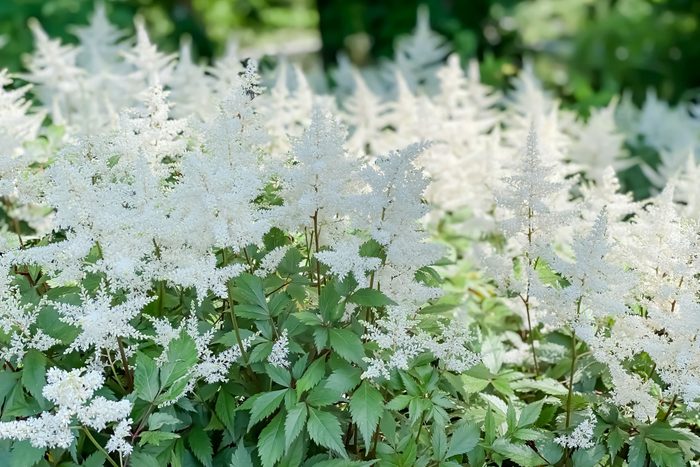
Astilbe
For those with shady gardens, Astilbe is a great perennial choice, and many varieties have white flowers.
Hardy in Zones 4 through 8, plant Astilbe where it can spread as a ground cover. Keep it well-watered the first few weeks and mulch around it so it doesn’t dry out. Like many other perennials, once it’s established, it can tolerate some dryness. Your reward will be plume-like flowers in the summertime.




















